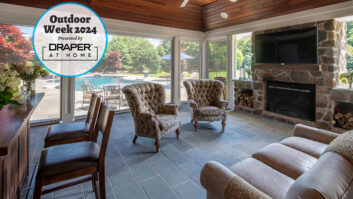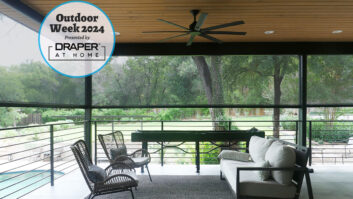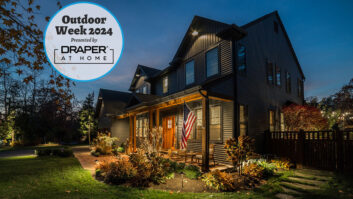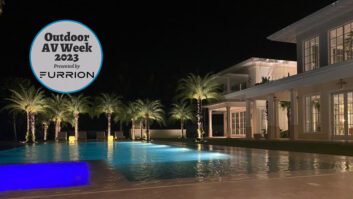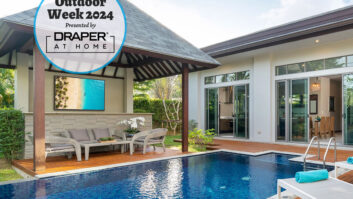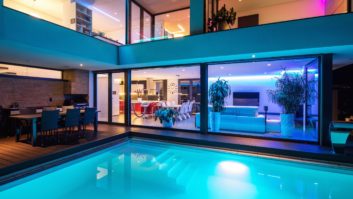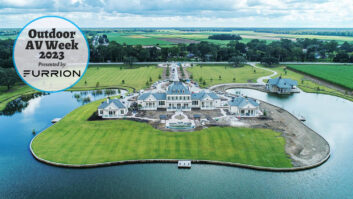
An outdoor audio system is a fundamentally different beast than an indoor one. The goal of a stereo or multi-channel system is immersion — an experience where the system itself disappears and the listener is transported to a live performance, or into the action of a movie or game. You’re not going to achieve that outdoors, and trying to do so is a fundamental misunderstanding of the purpose of residential outdoor audio.
Outdoor entertainment is about freedom. Inside, you have a defined listening area like a music or media room or a home theater. The immersive effects in these spaces are maximized based on listener position. Outdoors, people want to be able to move around, and they should have the same listening experience wherever they are. The goal of an outdoor system isn’t immersion: it’s coverage uniformity. With that in mind, let’s explore four important considerations for deploying an outdoor audio system.
Sources
Source location can be a tricky factor for outdoor applications. Frequently, homeowners expect to be able to stream music from a Wi-Fi or Bluetooth source such as a cell phone. If the source device is in the user’s pocket outside, and the receiver is inside the house, there are going to be a lot of dropped packets.
An outdoor receiver can capture the wireless signal and transport it to the amplifier over a wired connection. Products like the PulseAudio Wi-Fi Streaming Receiver allow the homeowner to wirelessly stream music from their phone just like they’re accustomed to doing in their home or car. The signal can then be transported to the amplifier over a wired or wireless connection.
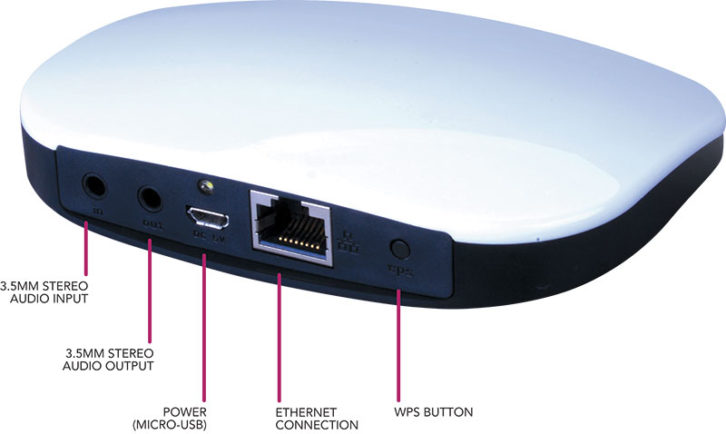
Power
If your system is going to have four or more speakers, I highly recommend looking at a constant-voltage system for outdoor applications. Remember, uniform coverage is the goal outdoors, which means that the constant-voltage system design used in public address applications will work here, too.
Calculate power required using the EPR formula, determine your taps, and select your amplifier accordingly — I usually add about 20 percent of headroom to the calculated wattage requirement as a safety margin. If you’re planning on adding an outdoor subwoofer, look for an amp with flexible power output options — that will allow you to have both a constant-voltage loudspeaker system and a low-impedance subwoofer powered by the same amp. Never go below the calculated power requirement to save a few bucks; you’ll wind up overdriving the amp.
Distribution
You need to be strategic about where to physically locate the amplifier and distribute signals from the amp to the speakers to reduce line loss. If you have a small enough coverage area and an appropriate outdoor location, like a shed, you can locate the amplifier outdoors and connect to the loudspeakers via Bluetooth. Bluetooth compression is not going to make a discernible difference to the listener’s experience in an outdoor setting, but wireless infrastructure will save costs.
In larger systems, or systems where the amplifier must be located inside the house, you will need to run speaker wire. Constant-voltage systems have a big advantage here, too, allowing you to run up to 1800 feet of speaker wire before discernible line loss. In a low-impedance system, even with pretty low-gauge wire, you’re not going to get more than a couple hundred feet before an unacceptable signal dropoff.
Outdoor AV Week Stories:
• The Greater Outdoors
• Outdoor AV Basics
• The Evolving Outdoor TV
Speaker Locations
Uniformity is the name of the game for outdoor audio coverage — you’re looking for no more than a ±3 dB SPL dropoff across the 20 Hz – 20 kHz frequency range throughout the listening area. You can define “listening area” as “the places where people will stop and stay” — a patio or lanai, the pool deck, around a firepit, etc.
The materials you’re mounting against can have a dramatic effect. A sliding glass door is a highly reflective surface with no dispersion; mounting near one of these will cause reflected sound interference, affecting vocal intelligibility. Brick, on the other hand, acts as a natural diffuser. Whatever the speakers’ spec sheets say, you have to account for the acoustical properties of the architectural features, test performance, and adjust to achieve the uniformity you’re looking for.
An outdoor system should, in its way, be just as invisible as an indoor system. Just as an indoor system “disappears” when the homeowner is fully immersed in the content, the outdoor system “disappears” when the user never has to think about how far away the receiver or speaker is. A great outdoor audio system has them completely covered.
For more information, visit www.vanco1.com.
